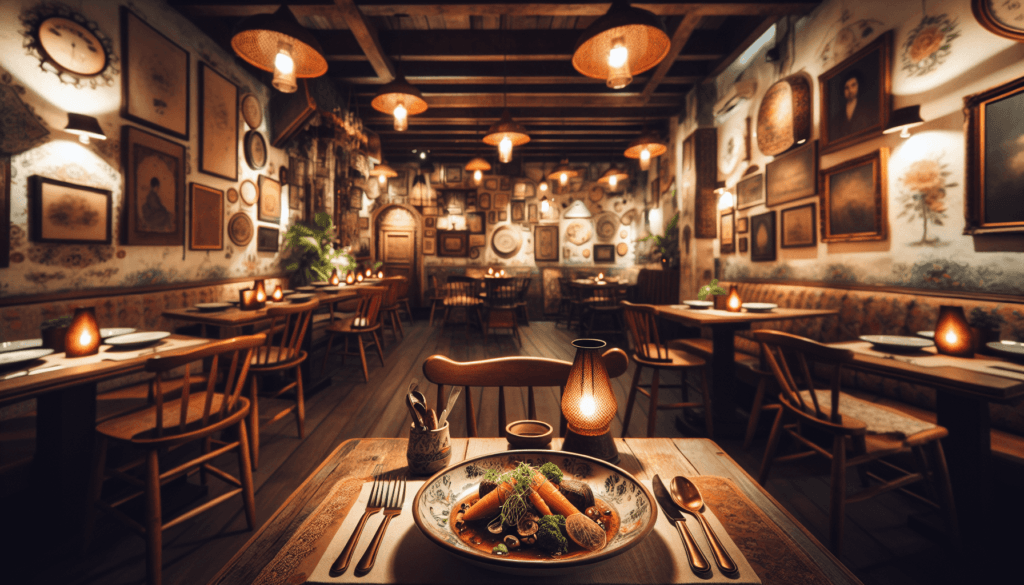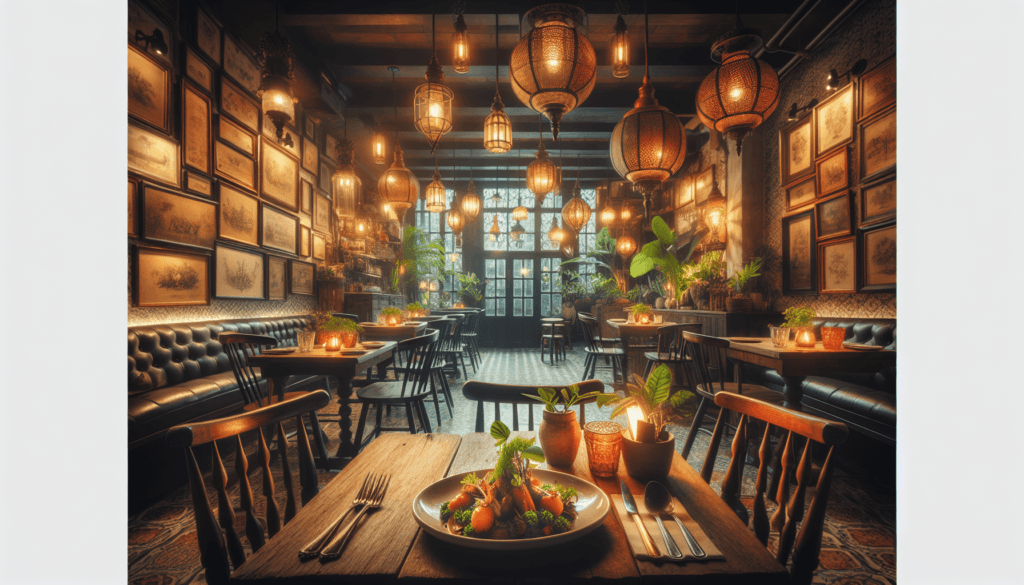What makes a travel experience truly unforgettable? Is it the landmarks that every tourist flocks to or the hidden nooks that only the locals know about? If you’re someone who values an authentic taste of culture, then discovering hidden local restaurants during your travels could be your golden ticket to experiencing a place as if you lived there. Dining at these lesser-known eateries not only delights the taste buds but also offers a peek into the everyday lives of the residents and their culinary traditions.

Table of Contents
Rediscovering the Joy of Eating
Travelers often default to guidebooks suggesting the best places to eat, but aren’t the most soul-satisfying meals found off the beaten path? Amongst the throngs of tourists clicking selfies at famous attractions, there exist intimate, inviting corners serving dishes that could steal the show from any five-star restaurant. The magic of hidden local restaurants lies in their ability to transcend mere dining; they become portals to stories, people, and history.
The Importance of Eating Local
Eating locally is an immersive experience where food is prepared with love, time-honored techniques, and locally sourced ingredients. Local restaurants are run by people who breathe new life into culinary traditions, ensuring that every dish tells a story. For a traveler, this means tapping into a city’s pulse and savoring the essence of a new home away from home.
A Glimpse into the Past
How did the concept of hidden local restaurants become a cherished aspect of traveling? Historically, eateries have served as bustling social hubs. Back to ancient civilizations, markets and taverns were more than just places to eat — they were where news was shared and lives converged. This history is still palpable today, offering you a taste of unity with the past.
Culinary Fame vs. Culinary Gems
While Michelin stars may draw the crowds, it is the quiet, unassuming gems that capture the heart. Prestige and recognition often lead to prices that many can’t afford or lengthy waits that time-starved travelers cannot entertain. On the other hand, culinary gems tucked in alleyways or hidden behind modest facades offer not just meals but experiences filled with genuine warmth and hospitality.
Breaking it Down: Local Flavors and Concepts
Let’s explore some concepts that could deepen your appreciation for these hidden culinary spots. Think of terms like ‘slow food’, which emphasizes sustainable and traditional cooking techniques, and ‘mom-and-pop shops’, which are family-owned and celebrate intergenerational skills and recipes. Dining becomes a beautiful blend of taste and tradition when you immerse yourself in these concepts.
The Concept of Slow Food
Originating in Italy in the late 1980s, the slow food movement stands as a rebellion against fast food’s dominance. It champions the local and the seasonal, inviting diners to savor meals as experiences to be enjoyed at leisure. Every bite pays homage to cultural and environmental sustainability, encouraging you to relish the story behind your food.
Mom-and-Pop Shops: Tradition in Every Dish
Mom-and-pop shops are the backbone of local dining. Often passed down through generations, these establishments hold families together through shared goals and culinary passions. They rely on traditional methods and recipes cherished across decades, ensuring that every time you dine, you become part of a family narrative as rich as the taste of their dishes.
Analyzing Diverse Perspectives
It’s time to compare different points of view. On one side, large commercial restaurants invest in breadth, offering extensive menus and leveraging technology for consistent delivery. Conversely, hidden local restaurants invest in depth, enriching fewer dishes with a bounty of love, history, and local flavors. Despite fewer menu offerings, they often leave you with a more memorable, nuanced experience.
| Commercial Restaurants | Hidden Local Restaurants |
|---|---|
| Broad menu selections | Limited but specialized menu |
| Consistent delivery through technology | Unique experiences from traditional methods |
| Commercialized taste | Personalized and authentic flavors |
| Typically higher pricing | More affordable pricing |
Consider what draws you more: consistent, yet impersonal; or unique, yet highly personal. Therein lies the beauty of choice that travel provides.

Stories of Hidden Culinary Gems
Case Study: Barcelona’s Bodegas
Bodegas in Barcelona are a prime example of a culinary treasure. These are old wine cellars reimagined as eateries that continue to respect local winemaking traditions. Imagine savoring homemade tapas paired with regional wine after a day of exploring art and architecture. The ambiance draws you into the local way of life, making you more than just a visitor.
Another Example: Tokyo’s Izakayas
Tokyo’s izakayas, small-scale and informal pubs, serve a menu driven by affordability and taste. Typically discovered through well-hunted recommendations or accidental wanderings, these enterprises offer an authentic taste of Japanese culinary artistry. It is here that you can find dishes like grilled yakitori and fresh sushi that resonate with the city’s nonchalance and spirit.
Impact of Hidden Local Restaurants
The economic impact of hidden local restaurants is noteworthy. They support local producers, sustain communities, and preserve culinary traditions. In contrast to global chains, they ensure that economic benefits remain within and enhance the community’s wellbeing. By choosing these establishments, you contribute positively and help sustain a unique culture and heritage.
The Consequences of Culinary Choices
Choosing to eat locally can have profound implications. It encourages cultural preservation and supports community infrastructure, making tourism more sustainable. As a traveler, you have a choice to engage with the environment meaningfully, affecting both your experience and that of the locals economically and culturally.
Gazing Into the Culinary Future
What might the future hold for hidden local restaurants? Predictions suggest a continued rise in culinary tourism, with travelers increasingly valuing authenticity over uniformity. As global interest grows in shared cultural experiences, hidden gems might surface as the new standard-bearers for culinary discovery.
The Broader Implications
The impact of this burgeoning appreciation could redefine the tourism industry itself, encouraging nuanced storytelling and a keener focus on sustainability. By elevating these hidden dining havens, you play a pivotal role in maintaining their legacy and enhancing their landscapes.
In conclusion, the allure of hidden local restaurants lies in their fusion of food, culture, and history. They promise an intimacy and authenticity that widespread commercial chains cannot replicate. So as you plan your next adventure, remember to look beyond the beaten path and the glittering lights of the well-known. Instead, allow yourself to be guided by curiosity and the voices of those who call the place home. How will you curate your next adventure — will it be through famed icons or by embracing the charm of the undiscovered?
